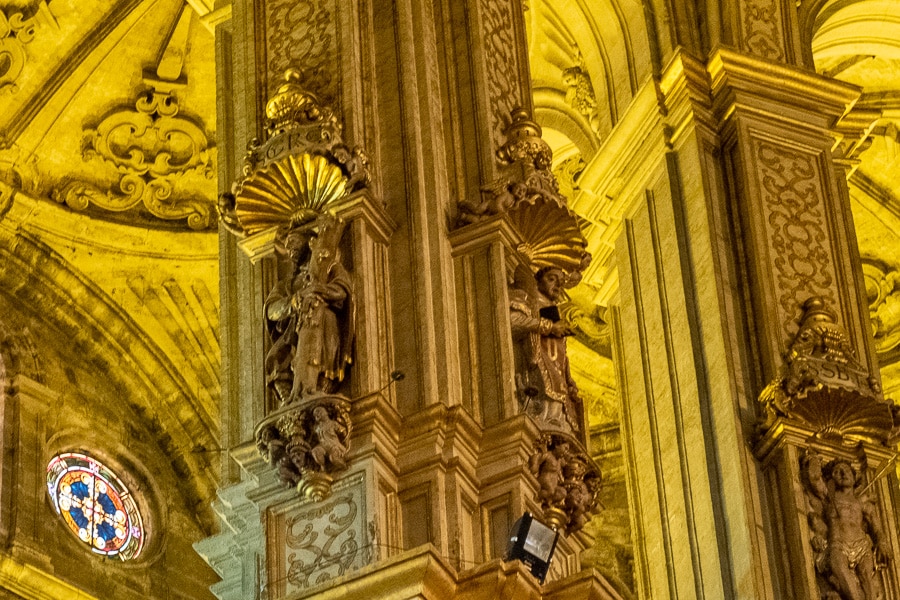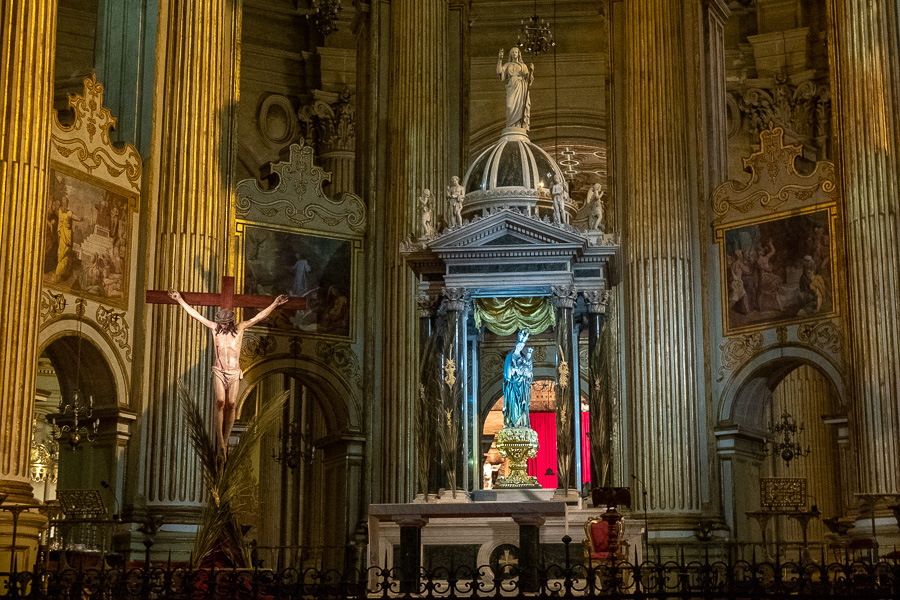The Cathedral of Málaga, Spain

The Cathedral of Málaga (Catedral de Málaga,) also known as the Cathedral of the Incarnation, is the Roman Catholic cathedral located in the heart of Málaga, a city on the southern Andalusian coast of Spain. As in any Spanish city, the cathedral is one of the most important landmarks and is a notable example of the Renaissance and Baroque architectural styles.
Construction of the current cathedral began in 1528, and took more than 200 years to complete. It was built on the site of a former mosque, which was destroyed by the Christian conquerors after the city was captured from the Moors in 1487. The cathedral was designed by a series of architects, including Diego de Siloé, who originally designed a Gothic style cathedral, and, later, Pedro de Mena and Alonzo Cano, with the result that the Cathedral of Málaga manifests various architectural styles.

The Cathedral grounds include several buildings and courtyards. The façade of the cathedral is in the Baroque style, and features two bell towers, only one of which is complete. The completed tower is more than 84 meters (276 feet) high. The façade itself is decorated with intricate details and carvings, including images of saints and biblical scenes. The central portal is especially noteworthy, featuring a relief of the Immaculate Conception at the top.

The interior of the cathedral features a variety of artistic and architectural elements. Of particular note is the design of the ceiling. The nave is wide and spacious, and it its columns are decorated with numerous sculptures and paintings. The nave is lined with chapels in various styles. And the substantial columns are topped by prominent sculptures and even more baroque ornamentation.

The central and most important artwork in the cathedral is the altarpiece with a baldacchino that shades a statue of the Virgin. That centerpiece is surrounded by a spectacular columnar tableaux that depicts scenes from the life of Christ.

The choir stalls, which are located in the central nave of the cathedral in typical Spanish fashion, are made of carved wood and feature intricate depictions of saints and bishops. The 18th century organ, is one of the largest organs in Spain.

One of the most unique features of the cathedral is the “Santos Mártires” chapel, which is located behind the choir stalls. This chapel contains the remains of the patron saints of Málaga, Saint Ciriaco and Saint Paula, martyrs who were executed during the time of the Roman Empire. The chapel is decorated with intricate frescoes and sculptures, and it is considered to be one of the most beautiful and sacred spaces in the cathedral.

The cathedral also features a series of courtyards and gardens, which are open to the public. The main courtyard is known as the “Patio de los Naranjos” (Orange Tree Courtyard) near the public entrance of the cathedral is a peaceful space filled with orange trees and fountains.

The cathedral was finally completed in 1782, but it was never fully finished. The original plans for the cathedral included two towers, but only one of them was built. The unfinished tower is called La Manquita, which means “the one-armed one”. According to some accounts, money originally dedicated to finishing the tower was sent to the British colonies in America to finance their revolution against British rule.

The Cathedral of Málaga is open Monday to Friday from 10 a.m. to 7:30 p.m.; Saturday from 10 a.m. to 6 p.m.; and Sunday from 2 to 6 p.m. Admissions close 45 minutes before closing times. Entrance tickets for the cathedral are €8 general admission, €7.50 for seniors, €6 for students, and €3 for children. You can also purchase a combined ticket to allow you onto the roof of the cathedral starting at €12. You can purchase advance tickets here.
When you’re thinking of traveling, your first stop should be our Travel Resources page, where we list all the essentials you need to make your travels easier, cheaper, safer, and more fun.
You can also help yourself get ready for your travels by reading our Get Started Planning Your Trip Now page.
We love traveling–with the right gear. We’ve gathered a lot of the stuff we use to make travel more pleasant and efficient all on one page. Shop our Travel Past 50 Amazon page to find our favorite gear. If you purchase something from the store, Travel Past 50, as an Amazon affiliate, may receive a small commission at no extra charge to you. Thanks.
We never leave home without our travel insurance. Nor should you. Search for the travel insurance from Allianz that best meets your needs, whether it be an annual plan or a single trip.
You can see (and buy prints) of most of our travel photos in one place on this page.
Note: This post and other posts on TravelPast50.com may contain paid or affiliate advertising links. As an Amazon Associate we earn from qualifying purchases.
Ladies and gentlemen, I am happy to announce that it’s that time of year again! That’s right. It’s time…
Copyright © 2024 Retiring & Happy. All rights reserved.








